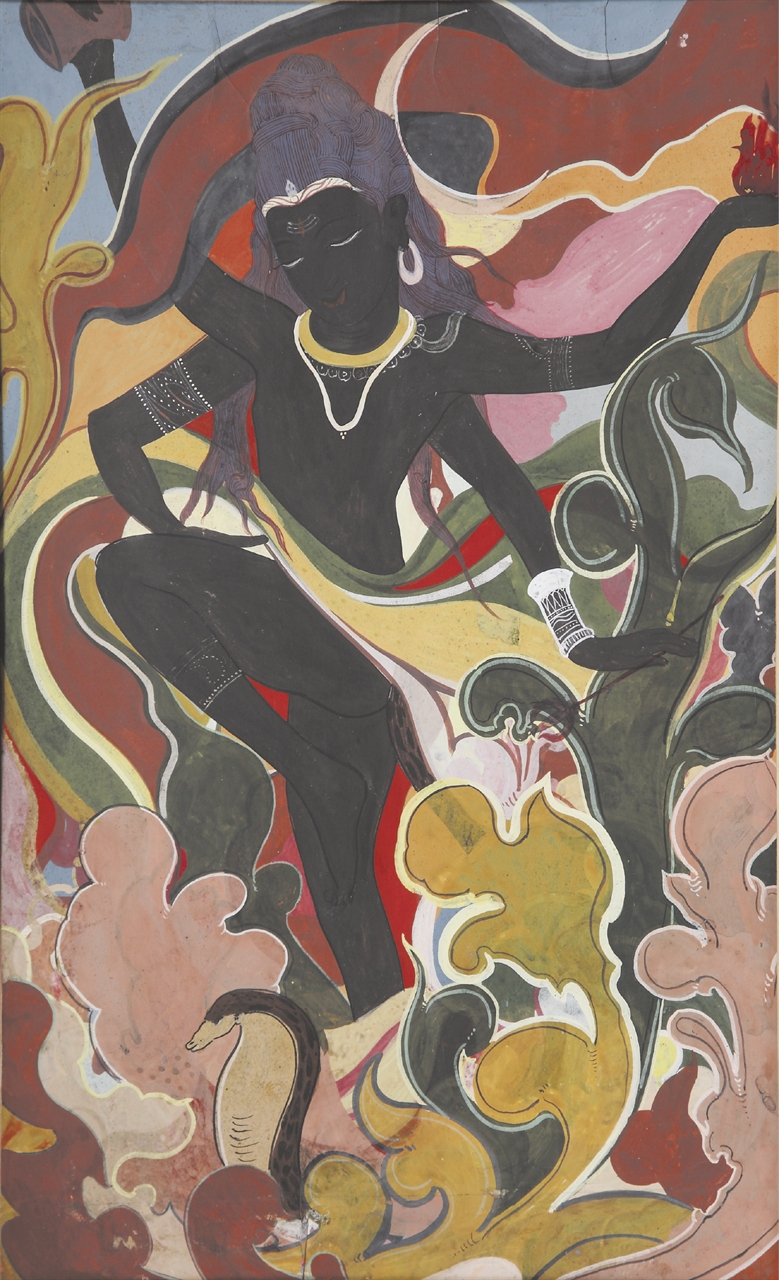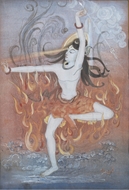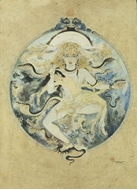![]() Significant Indian Paintings
Significant Indian Paintings
![]() Significant Indian Paintings
SHIVA (ARTIST UNKNOWN)
Significant Indian Paintings
SHIVA (ARTIST UNKNOWN)
RELATED LOTS
CONTACT US
Catalogue & Viewing
Lot Closed
Accounts & Shipping
Lot Closed
-
Literature
 Literature
Literature

An unusual painting by a Tamil speaking anonymous artist (derived from the initials in reverse), it represents Shiva in his iconic manifestation as Nataraja –The Divine Cosmic Dancer, engrossed in the frenzied rhythm that destroys the weary universe in preparation of renewed creation. In this aspect Shiva is sometimes depicted in the dark form of Kaal Bhairava – The Fierce slayer of Evil, as is seen in this interpretation by the artist.
The Nataraja in his looming dark form dances among whorls of flame and smoke that the artist masterfully manipulates into a stunning palette of bright colours that creates a striking contrast to the protagonist. In his archetypal posture the Cosmic Dancer lithely raises his left leg in a dancing stance while holding the Damaru (small hand-held drum) and Agni (Fire) in his right and left hand respectively with the trident in yet another. His hair is neatly plaited and mounted with the crescent moon on the left and crowned with an ivory horn above the anointed forehead. At his, feet instead of the usual Apasmara (dwarf) a Cobra has been denoted which is the symbol of eternal wisdom. The mildly ornamented figure has his eyes half closed in deep contemplation which signifies his dance form as that of Lasya (the gentle form of dance) as opposed to the Tandava (the vigorous dance of destruction).
In this painting, we see the artist amalgamate a host of different art forms. The lyrical drawing of Shiva is inspired by the cannons of the Bengal School, whereas the linear treatment of the of the swirling fire and smoke draws comparison to the distinguished south-Indian tradition of mural painting as has been exemplified here with the image of Varaha Avatar mural from the Shiva Temple in the Kannur district of Kerala. The artist also draws obvious inspiration from the Thangka Paintings of Tibet where the Kaal Bhairava form is much revered and is also the reigning deity of Nepal with several shrines dedicated to him. The Bengal School had strong association in its iconographic depiction with the Thangka painting tradition of Tibet and Nepal. The influence is distinctively observed from the time of Nandalal Bose who initiated his students to the different indigenous forms of the age-old classical art forms of Asia in order to develop a renewed pictorial identity based on ‘Pan Asia’ rather than the blind aping of the West.


